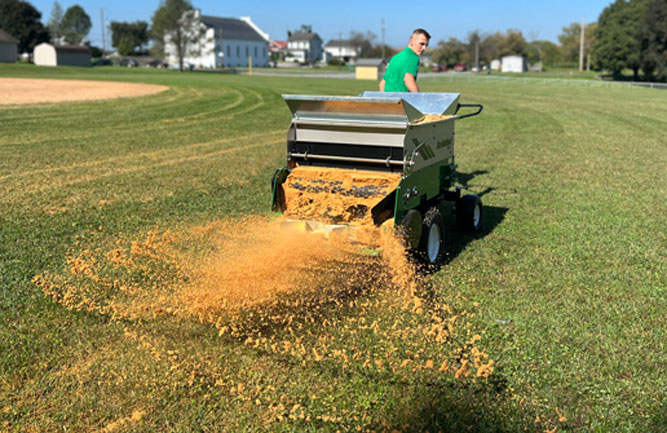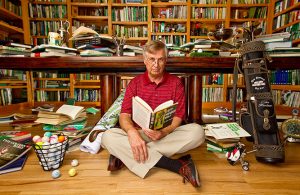Bringing precision to topdressing
Scott Kinkead is executive vice president of Turfco Manufacturing Inc., and has worked in the golf course industry his entire career. Kinkead is active in all aspects of the company and enjoys bringing new technology to Turfco’s products. Scott can be reached at scott@turfco.com for more information.
Q: What was the genesis of the new spin topdresser and control technology?
During the recession of 2008 and the downturn in the golf economy, we realized we needed to make products that were more efficient and effective at accomplishing the task at hand so superintendents could stretch their labor dollars further and free up time for other tasks. Our focus on topdressers was to bring more technology to a topdresser so a superintendent could apply a specific volume of sand and consistently repeat that application over the entire season. We wanted to make topdressing more precise and less of an art form.
Q: Where do you start the process?
We started by enhancing the hydraulics and redesigning the spinner so a superintendent could apply different volumes of sand to different components of the golf course without having to make any mechanical adjustments to the topdresser.
The topdresser has a wide range of belt speeds, spinner speeds and gate settings so that the volume of topdressing being applied can be changed by the push of a button.
While not high tech, we expanded the hopper to 80 inches long to match up with the bucket length of a front-end loader to ease loading and avoid waste.
Q: Tell me about the control technology.
A superintendent can adjust the belt speed, spinner speed and gate settings to achieve the desired application volume. Once the desired volume has been achieved, with the push of a button all those exact settings are saved and can be recalled by pushing the same button later in the season. The control device allows for four unique settings. One setting could be for a spring/fall topdressing for greens, a second for a summer topdressing for greens, a third setting for topdressing after the greens have been aerified and the fourth setting could be for tees and
approaches.
The operator can topdress a green using the spring/fall setting, and while driving to an adjacent tee press the button for the tee and approach setting and topdress the tee.
Q: What else can a superintendent do with the control device?
A superintendent can calculate the exact volume of sand being applied to a given area by plugging in the spinner speed, belt speed, gate setting and the square footage of the area to be topdressed. The device will calculate the volume of sand to be applied. This feature adds precision to topdressing by determining the actual volume of sand applied, say 0.4 cubic yards per 1,000 square feet.
Knowing the exact amount of sand being applied is becoming more important as many agronomists are recommending a specific volume of sand — for example 40 cubic yards of sand per 1,000 sq. ft. — be applied to a green per year. If a superintendent knows the target for volume of sand per year, the control device can determine how much sand is applied per application and then the superintendent can schedule the number of applications needed to meet the target.
Q: Anything else you would like to add?
We are trying to bring more control to topdressing, which will help superintendents take full advantage of the knowledge developed by scientists. We are striving to make sure the topdresser is not a limitation in the topdressing process.











